
Roots
Consider for a moment the very strands that spring from your scalp. They are not simply filaments; they hold memory. Each coil, each curve, each textured twist carries the whispers of generations, a living archive of identity and resilience.
To ponder how ancient dyeing methods impacted the vitality of textured hair is to listen deeply to these ancestral echoes, recognizing that our hair’s story is inextricably linked to the wisdom and practices of those who came before us. This is not a detached scientific inquiry; it is a journey into the soul of a strand, where biology meets heritage .
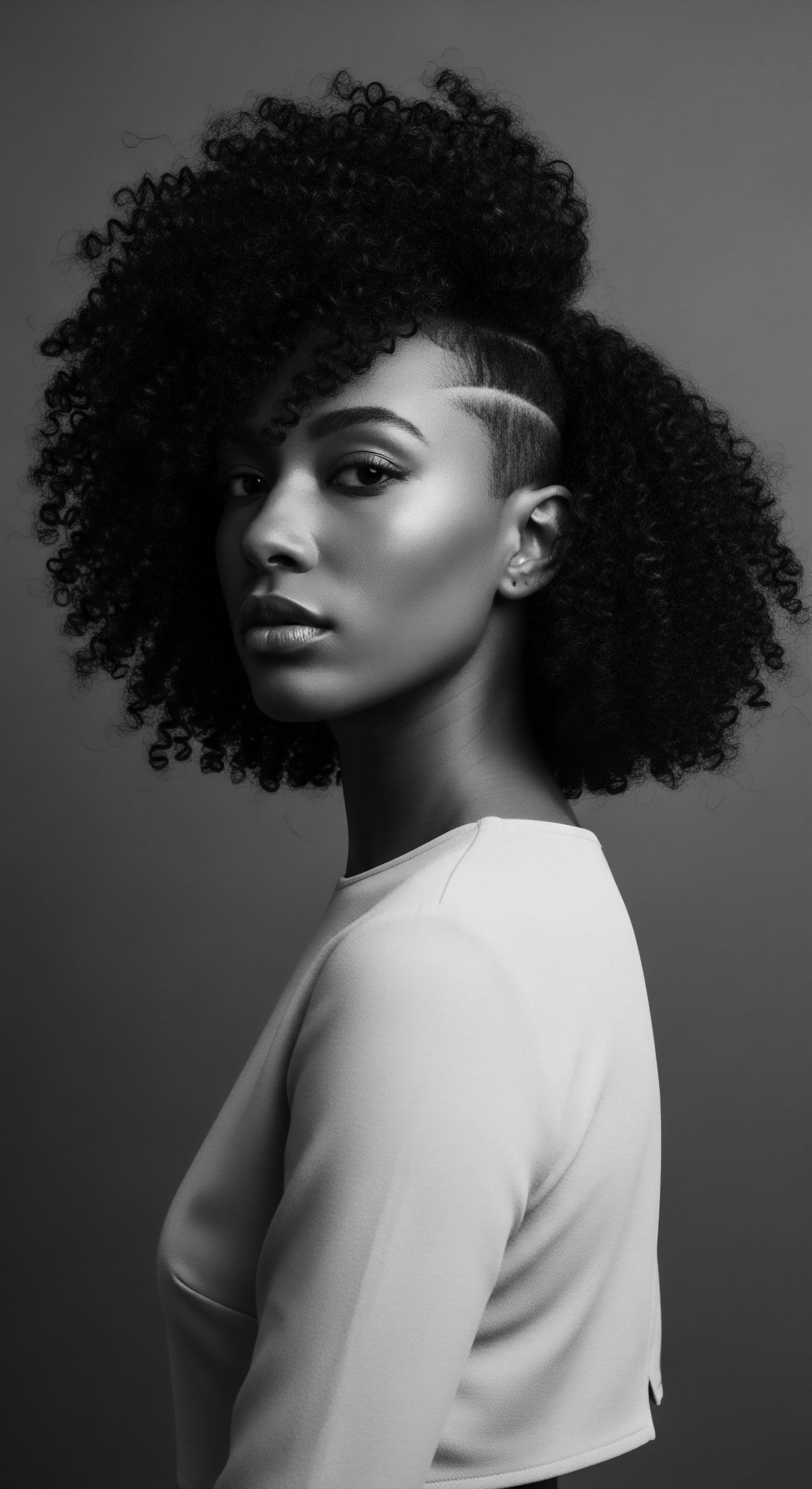
The Architecture of Ancestral Strands
Textured hair, with its inherent spiraling architecture, possesses a unique beauty and distinct structural considerations. Unlike straight strands, which allow natural oils to glide effortlessly down the shaft, the twists and turns of coily and curly hair create natural impediments. This means natural moisture tends to concentrate at the scalp, leaving the lengths and ends more susceptible to dryness. The cuticle, the outermost layer of the hair shaft, forms overlapping scales, much like shingles on a roof.
In textured hair, these scales might be more open or lifted at the bends of the curl, making the hair more porous and potentially more vulnerable to external factors. Understanding this foundational anatomy is crucial for appreciating the interactions between historical dyes and these particular hair types. The way these strands are shaped reflects the environment and ancestral adaptations, each coil a testament to adaptation and strength.
The innermost layer, the cortex, holds the majority of the hair’s mass and its natural pigment , melanin. It contains bundles of keratin proteins, intertwined in a helical formation. This intricate protein structure gives hair its elasticity and strength. Any external process, including ancient dyeing, would interact directly with this protein matrix and the delicate cuticle, determining the overall integrity of the strand.
Textured hair, a living legacy, carries its ancestral narrative within each unique curl and coil.
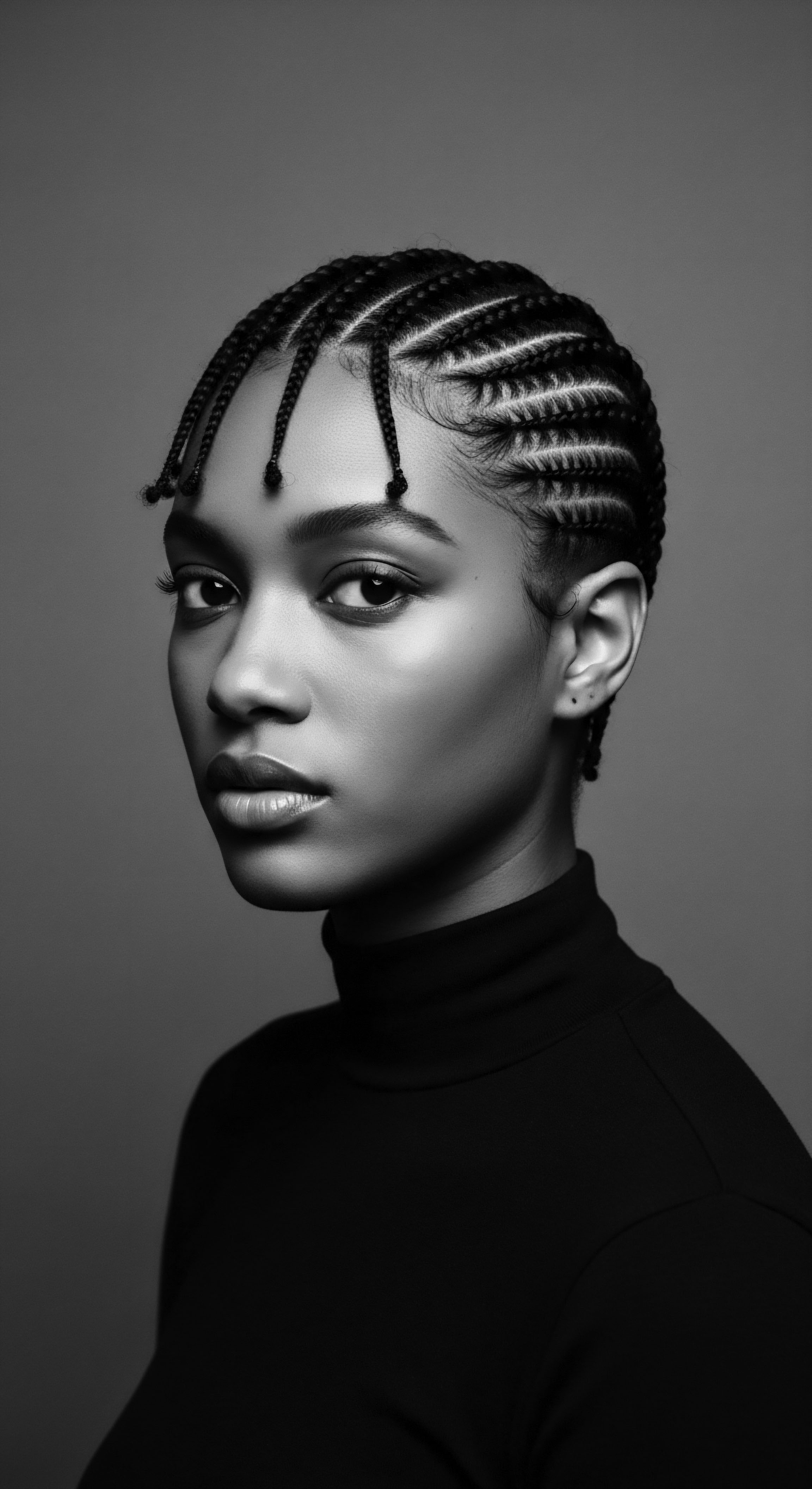
The Language of Hair Classification Through Time
While modern classification systems attempt to categorize hair types, ancestral communities often possessed their own nuanced ways of describing and understanding hair, frequently intertwined with social status, spiritual beliefs, and communal identity. These traditional lexicons were not always about curl patterns as we define them today, but about the hair’s overall appearance, its response to moisture, and its cultural significance. For example, hair that absorbed moisture readily might be seen as receptive, perhaps for specific ceremonial preparations. The care rituals associated with these classifications were often passed down through oral traditions , emphasizing the inherent connection between hair and communal wellbeing.
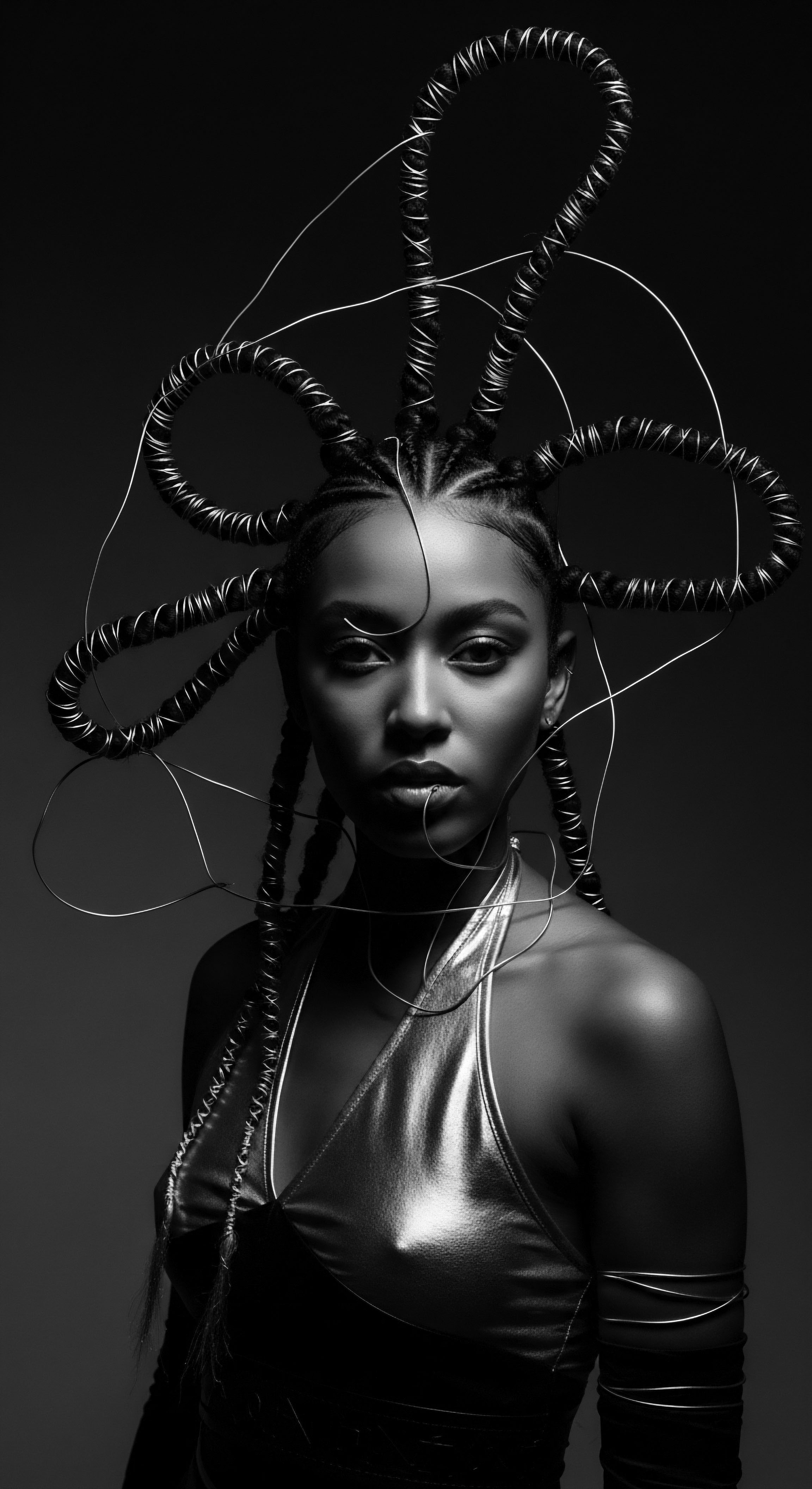
Hair’s Rhythms and Environmental Dialogues
The growth cycles of hair, from its active growth phase (anagen) to resting (telogen) and shedding (exogen), remain constant across human hair types. However, environmental factors and traditional diets deeply influenced hair health in ancient times. Access to nutrient-rich foods, exposure to diverse climates, and specific cultural practices all played a part in the overall condition of hair.
These influences laid the groundwork for how hair would respond to external applications, including the various natural dyes used. A well-nourished scalp and strong hair fiber would naturally possess greater resilience when introduced to the chemical processes of dyeing, highlighting the deep relationship between holistic health and hair vitality, a wisdom often held by ancestral healers .
The very definition of hair health, in many ancient African and mixed-race communities, transcended mere aesthetic appeal. It was viewed as a barometer of spiritual alignment, a marker of lineage, and a canvas for cultural storytelling . Thus, any practice applied to hair, including dyeing, was approached with a reverence that acknowledged its profound meaning.
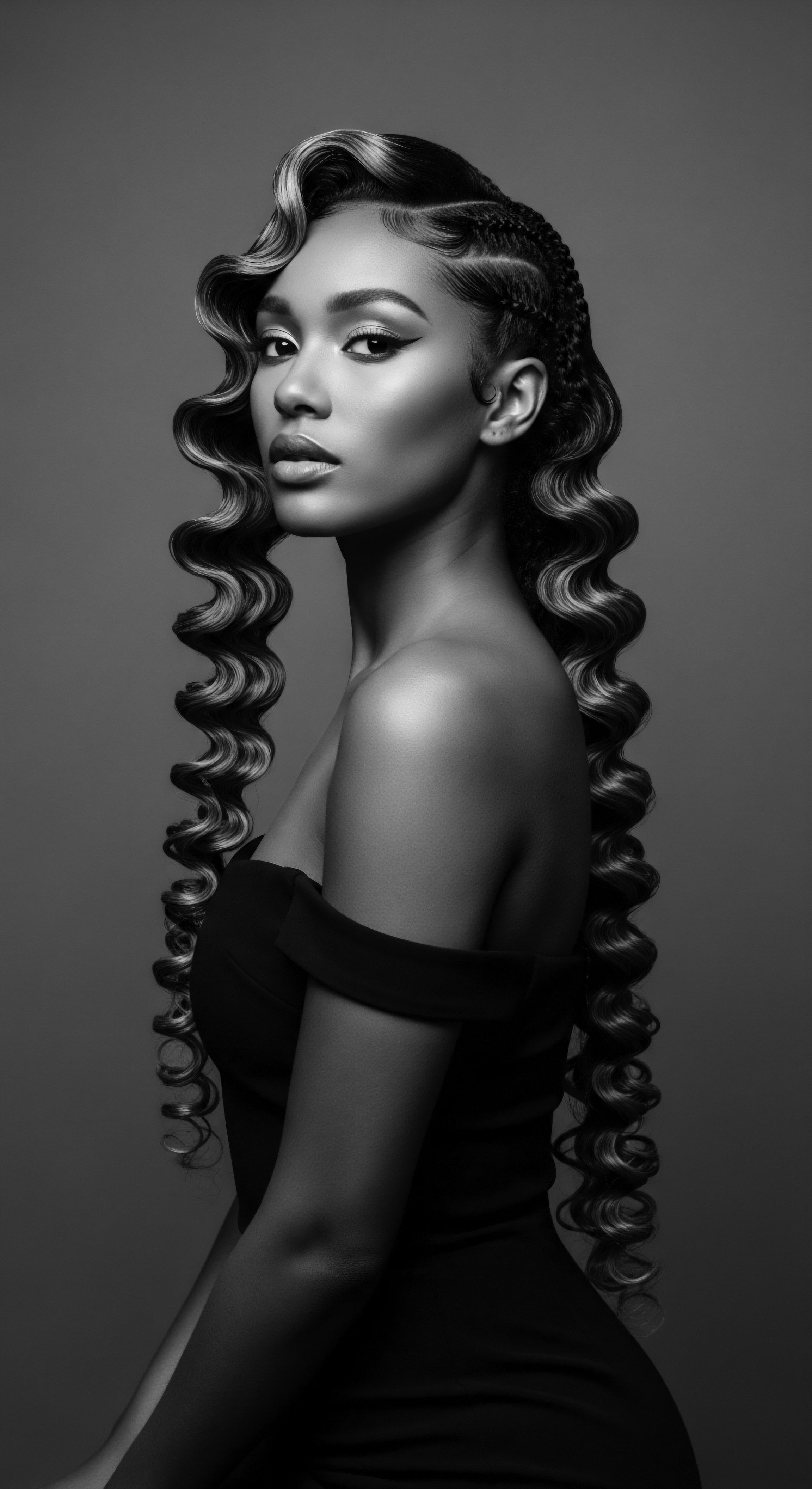
Ritual
The desire for adornment, for self-expression, for a visual connection to community and spirit, is as old as humanity itself. For communities with textured hair, this inclination found expression in ancient dyeing methods, practices steeped in ritual and deep understanding of the natural world. These were not mere cosmetic applications; they were often sacred acts , connecting individuals to their lineage and the earth.

Crafting Color from the Earth’s Bounty
Ancient peoples, particularly those across Africa, the Middle East, and parts of Asia where textured hair is prevalent, mastered the art of extracting pigments from their immediate environments. Plants like Henna (Lawsonia inermis), yielding rich red-orange hues, and Indigo (Indigofera tinctoria), producing deep blues, were central to these traditions. Other botanicals included walnut hulls for browns, turmeric for yellows, and various barks and roots. The preparation of these dyes was often a communal endeavor, involving grinding, soaking, and fermenting plant materials, a process that could take days and was passed down through generational knowledge .
- Henna (Lawsonia inermis) ❉ The lawsone molecule in henna binds to the keratin protein of the hair, creating a semi-permanent stain. This interaction is primarily external, coating the cuticle and slightly penetrating the outer cortex. Its protein-binding nature could, in certain contexts, contribute to a feeling of strengthened strands.
- Indigo (Indigofera tinctoria) ❉ Used often in conjunction with henna to achieve darker shades, indigo requires a reduction process to become soluble and attach to the hair. It also primarily deposits on the surface.
- Walnut Hulls (Juglans regia) ❉ Contain juglone, a naphthoquinone that reacts with hair protein to impart brown tones.
- Plant-Based Tannins ❉ Found in various barks and fruits, tannins can interact with hair proteins and, with the aid of certain mordants, create various earthy colors.

What was the Chemistry Behind Ancient Dyeing?
The fundamental chemistry of ancient hair dyeing revolved around direct dye absorption and, for some methods, the use of mordants . Direct dyes, like those from henna, had dye molecules that could diffuse into the hair fiber and form bonds with the amino and sulfhydryl groups in hair keratin. These bonds might include hydrogen, ionic, or even dative covalent bonds. Smaller dye molecules could penetrate the cuticle more easily, while larger ones primarily adsorbed onto the surface.
Mordants, often metal salts like iron, copper, or alum, were sometimes used to improve colorfastness and expand the range of shades. These substances acted as a link, forming connections between the dye molecules and the hair fiber. For instance, the combination of tannins with iron salts could yield a mossy green or gray.
The interaction between the dye, the hair’s natural protein, and any mordants formed the foundation of the color produced. The pH of the dye mixture also played a critical role; anthocyanins, for example, shift in color based on acidity or alkalinity.
Ancient dyeing was a complex interplay of natural chemistry, cultural practices, and deep understanding of botanical properties.

How Did These Methods Interact with Textured Hair Integrity?
The impact of ancient dyeing methods on textured hair integrity varied significantly based on the specific dye used and its preparation.
Plant-Based Dyes such as pure henna generally had a benign, and often beneficial, effect. Henna’s lawsone molecule coats the cuticle, acting like a natural protein treatment. This coating can lend a feeling of thickness and strength, potentially improving the hair’s structural integrity by reinforcing the outermost layer. For textured hair, which can be prone to dryness and fragility due to its coiled structure and lifted cuticles, this external reinforcement could have been protective, reducing breakage and enhancing overall robustness.
Many users report that pure henna makes their hair feel conditioned and stronger. However, it is noteworthy that pure henna can reduce curl definition for some individuals as it bonds to the hair, potentially making curls softer or less pronounced. This perceived softening of the curl might not have been viewed as a negative impact on integrity in all ancestral contexts, particularly if the desired outcome was hair that felt stronger and appeared healthier.
In contrast, methods involving Metallic Salts, such as lead acetate or compounds of silver and bismuth, carried significant risks to hair integrity. These dyes worked by gradually depositing metallic oxides and insoluble sulfides within the hair shaft, leading to a progressive darkening. While some ancient Roman recipes using lead compounds were noted to color hair black without immediate visible damage, long-term or repeated exposure to such substances could lead to brittleness and dryness. The interaction of these metals with the hair’s keratin, particularly its sulfur content, could compromise the disulfide bonds that contribute to hair’s strength and elasticity.
The risks of using metallic salt dyes were indeed recognized, with some sources cautioning against their use alongside other chemical treatments, as they could result in damaged or discolored hair. Such methods could disrupt the delicate balance of textured hair, exacerbating its natural tendencies towards dryness or even causing irreversible structural alteration.
| Dye Type Plant-Based |
| Typical Ingredients Henna, Indigo, Walnut Hulls, Turmeric |
| Mechanism of Action Lawsone/pigments bind to or coat hair keratin. |
| Potential Impact on Textured Hair Integrity Generally protective; can strengthen cuticle, add sheen. May soften curl pattern. |
| Dye Type Mineral/Metallic |
| Typical Ingredients Lead salts, Silver nitrate, Bismuth compounds |
| Mechanism of Action Deposit metallic oxides/sulfides within hair shaft. |
| Potential Impact on Textured Hair Integrity Risk of brittleness, dryness, and structural damage over time. Incompatible with other chemical treatments. |
| Dye Type The impact on hair integrity was deeply tied to the dye's chemical composition and its interaction with the hair's natural protein structure. |

Tools and The Tenderness of Application
The tools used in ancient dyeing were simple yet effective, ranging from stone mortars for grinding plants to wooden combs and hands for application. The absence of harsh chemical processes, commonly seen in later synthetic dyes, often meant the application itself could be a more tender process. In many African cultures, hair care, including dyeing, was a communal event, often involving storytelling and shared wisdom, further linking these practices to deep social bonds and cultural identity . This communal aspect likely reinforced meticulous application and observation of hair’s response, contributing to a holistic understanding of hair health within the community.
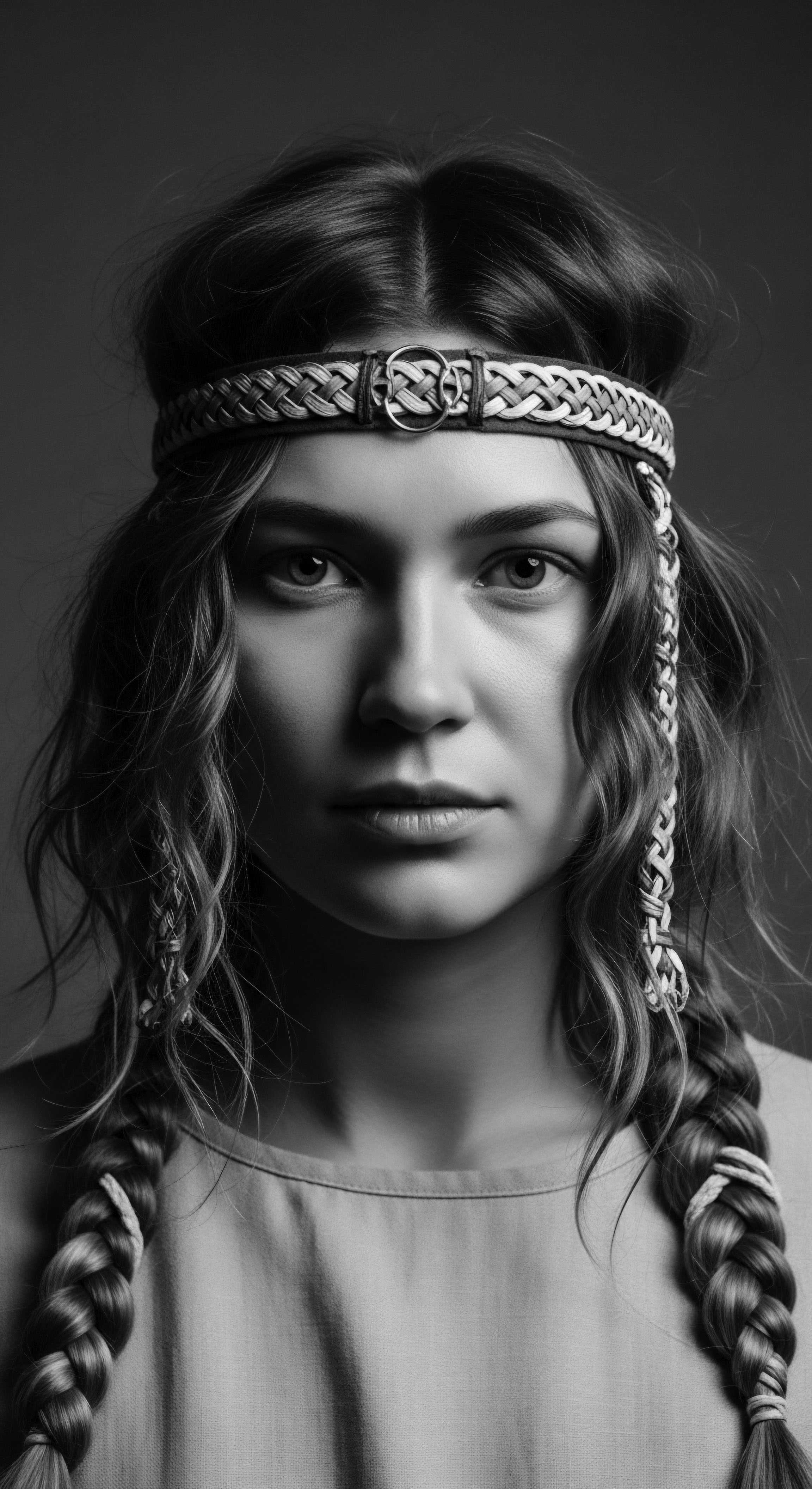
Relay
The echoes of ancient dyeing persist, informing our modern understanding of hair integrity and reminding us that innovation often springs from deep historical roots. To truly grasp the impact of these methods on textured hair, we must look beyond the purely chemical reactions and consider the intricate cultural fabric in which they were woven. This includes looking at specific instances where these practices shaped both the hair and the identity of those who wore it.

A Pigment’s Journey ❉ Henna’s Strengthening Legacy
One of the most compelling examples of an ancient dyeing method that positively impacted textured hair integrity is the enduring tradition of using Henna. Across North Africa, the Middle East, and South Asia, communities with diverse textured hair patterns have relied on henna for millennia, not only for its vibrant reddish-orange hues but also for its conditioning properties. The lawsone molecule present in henna leaves coats the hair’s keratin, forming a bond that adds a protective layer to the cuticle. This action differs markedly from modern oxidative dyes, which penetrate and often lift the cuticle to deposit color within the cortex, a process that can compromise hair’s structural integrity, especially in already delicate textured strands.
A significant study by Walter, et al. (2006) on a Greco-Roman hair dye recipe using lead oxide and slaked lime, while demonstrating the formation of lead sulfide nanocrystals inside hair shafts for black coloring, also noted that the dye worked “without damaging the hair.” This particular metallic dye created nanocrystals of lead sulfide that colored the hair black, and interestingly, the researchers observed that the alpha-helical keratin structures of the hair were preserved during the process. While metallic dyes often come with warnings regarding their interaction with modern chemical treatments, this historical example suggests that some ancient metallic formulations, perhaps due to their specific chemical kinetics or minimal concentration of active components, might have achieved color without the extensive structural disruption associated with harsher contemporary metallic salt products. This offers a different perspective on the often-generalized notion that all metallic dyes were inherently destructive, urging a deeper, more specific look into their varied formulations and their heritage applications.

The Dance Between Hair Structure and Dye Affinity
Textured hair, with its unique morphological characteristics, interacts with dyes in ways distinct from straight hair. The spiral shape of the hair strand means that the cuticle scales, which are typically smooth and flat in straight hair, might be more raised or uneven, particularly at the curves of the coil. This naturally higher porosity of textured hair can mean a greater uptake of dye, but also a greater potential for moisture loss if the dye process is harsh. Plant-based dyes like henna, by coating the cuticle, can help to smooth these raised scales, effectively reducing porosity and sealing moisture within the hair shaft.
This sealing action contributes to improved moisture retention, a crucial aspect of maintaining the integrity and health of textured hair. The resulting strengthened cuticle offers greater protection against environmental stressors and styling manipulation, a significant benefit in ancestral practices where hair was often worn in intricate, long-lasting styles.
Consider the historical perspective of communal hair care. In many traditional African societies, hair rituals were not solitary acts but deeply social occasions. The meticulous application of natural dyes, often accompanied by singing, storytelling, and shared wisdom, meant that care was given to ensure even distribution and proper adherence, minimizing any potential for uneven color or localized damage. This communal vigilance served as a practical quality control, promoting healthy hair practices that extended the vitality of the strands.

From Ancestral Knowledge to Modern Resonance
The insights gleaned from ancient dyeing practices offer valuable lessons for contemporary textured hair care. The emphasis on natural ingredients, the understanding of porosity (even if not termed scientifically as such), and the communal aspect of care all speak to a holistic approach to hair health. The protective benefits observed with traditional henna, for instance, align with modern understandings of protein treatments and cuticle health.
The traditional knowledge of using local plants for hair coloring and care embodies a deep ecological connection, a reliance on the earth’s bounty that often comes with inherent benefits for hair integrity. This ancestral wisdom, passed down through generations, underscores the fact that effective, non-damaging hair care is not a modern invention but a legacy deeply rooted in the practices of indigenous and diasporic communities.
- Communal Application ❉ Hair dyeing was often a shared activity, allowing for collective knowledge transfer and careful, deliberate application.
- Ingredient Purity ❉ Reliance on single-ingredient plant dyes minimized exposure to complex chemical mixtures.
- Holistic Integration ❉ Hair care was often integrated into broader wellness practices, recognizing the interconnectedness of body, spirit, and environment.
| Aspect of Integrity Cuticle Layer |
| Ancient Plant-Based Dyes (e.g. Henna) Coat and smooth cuticles, reducing porosity. |
| Ancient Metallic Dyes (e.g. Lead-Based) Potential for deposition within cuticle/cortex, causing stiffness or fragility. |
| Aspect of Integrity Moisture Retention |
| Ancient Plant-Based Dyes (e.g. Henna) Improved due to sealed cuticle, leading to less dryness. |
| Ancient Metallic Dyes (e.g. Lead-Based) Compromised by metallic deposits, increasing dryness risk. |
| Aspect of Integrity Curl Definition |
| Ancient Plant-Based Dyes (e.g. Henna) May soften curl slightly due to coating effect, adding weight. |
| Ancient Metallic Dyes (e.g. Lead-Based) Could alter texture or lead to breakage at curl bends if hair becomes brittle. |
| Aspect of Integrity Long-Term Health |
| Ancient Plant-Based Dyes (e.g. Henna) Generally positive, contributes to strength and thickness over time. |
| Ancient Metallic Dyes (e.g. Lead-Based) Potential for cumulative damage, chemical incompatibility with modern treatments. |
| Aspect of Integrity Understanding these historical differences highlights the enduring wisdom of natural practices for textured hair vitality. |
The resilience of textured hair, so often celebrated in our modern era, has deep historical roots. Its ability to withstand diverse environments and traditional styling practices, even after being colored with ancient dyes, speaks to an inherent strength. This strength was honored and supported by many ancient dyeing methods that prioritized the hair’s well-being, inadvertently safeguarding its integrity through a harmonious relationship with nature.
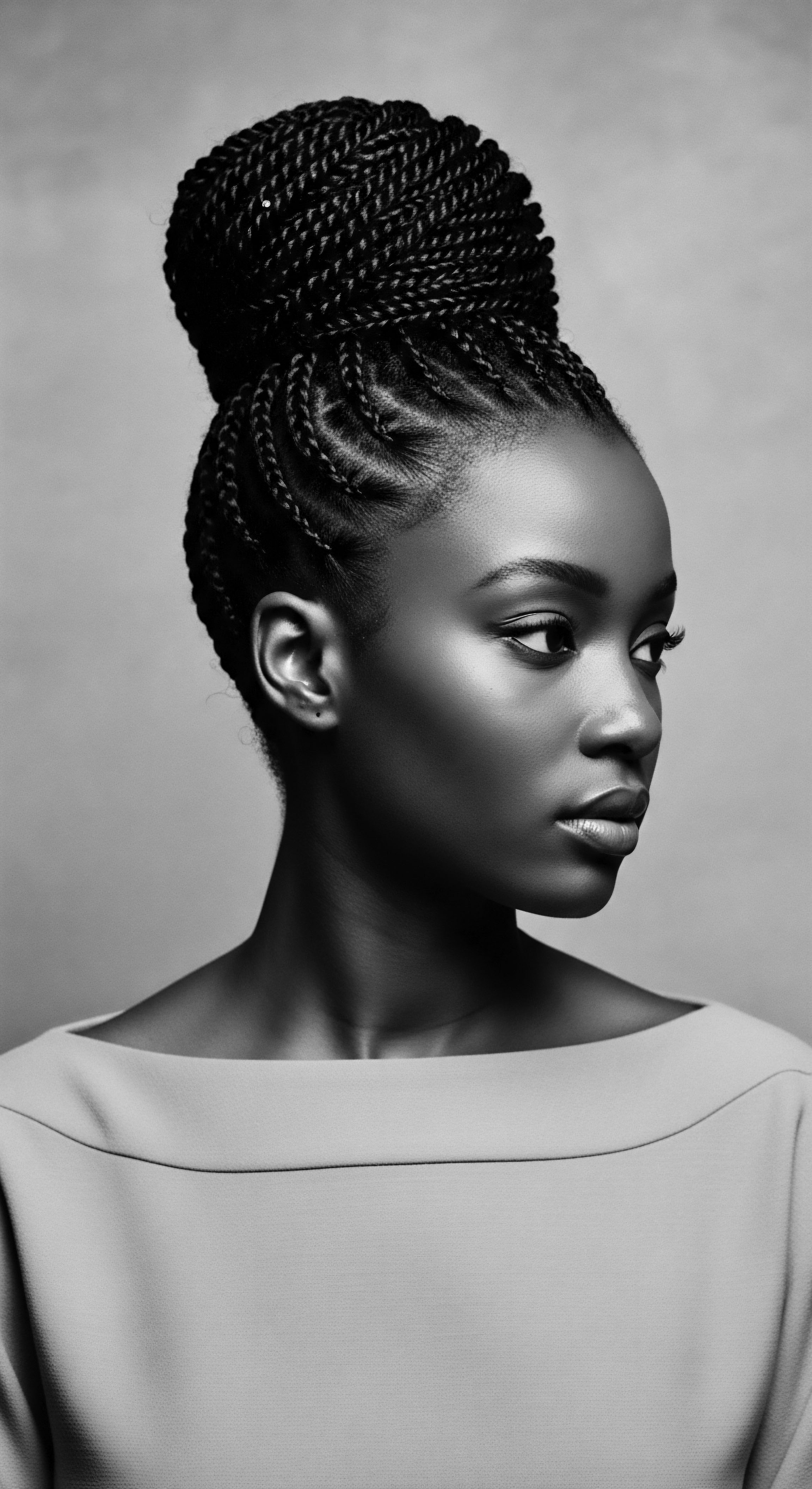
Reflection
The story of ancient dyeing methods and their impact on textured hair integrity is more than a historical footnote; it is a resonant chord in the symphony of our textured hair heritage . Each coil, each strand, is a testament to the ingenuity, resilience, and profound wisdom of our ancestors. From the earth’s botanicals to the meticulous hands that applied them, these practices remind us that the pursuit of beauty was often intertwined with deep knowledge of well-being, an understanding that recognized hair as a living extension of self and spirit.
This enduring legacy calls upon us to view our textured hair not merely as a biological attribute, but as a living, breathing archive of cultural memory. The choices made by those who came before us – the pigments they chose, the rituals they observed, the communal spaces they cultivated – speak volumes about a holistic approach to hair care that prioritized its intrinsic vitality. As we move forward, we carry these ancestral lessons, recognizing that the integrity of our hair today is a continuation of a story written long ago, a story of strength, beauty, and the boundless soul of a strand.
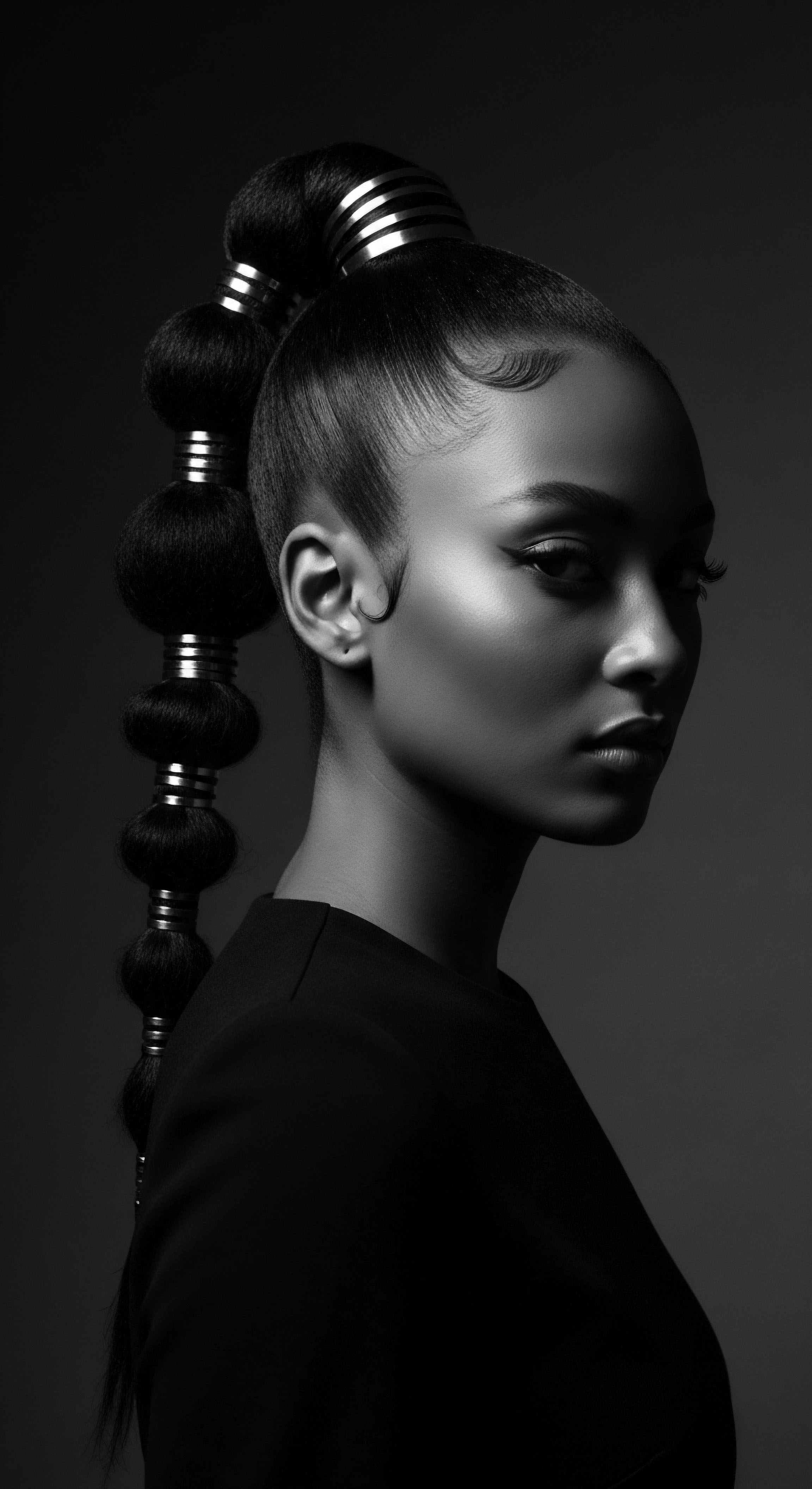
References
- Walter, Philippe, et al. “Ancient Hair Dye Based On Nanotechnology.” Nano Letters, vol. 6, no. 9, 2006, pp. 2045–2049.
- Sherrow, Victoria. Encyclopedia of Hair ❉ A Cultural History. Greenwood Press, 2006.
- Byrd, Ayana D. and Lori L. Tharps. Hair Story ❉ Untangling the Roots of Black Hair in America. St. Martin’s Griffin, 2001.
- Robbins, Clarence R. Chemical and Physical Behavior of Human Hair. 5th ed. Springer, 2012.
- Cardon, Dominique. Natural Dyes ❉ Sources, Traditions, Technology and Colorants. Archetype Publications, 2007.
- Burkinshaw, Stephen M. Physico-Chemical Principles of Colour Chemistry. Blackie Academic & Professional, 1995.
- Matjila, Chéri R. “The Meaning of Hair for Southern African Black Women.” Dissertation, University of the Free State, 2020.
- Nohynek, G. J. et al. “Safety Assessment of Hair Dyes.” Regulatory Toxicology and Pharmacology, vol. 40, no. 2, 2004, pp. 217-234.
- Ghosh, S. and G. N. Chaudhuri. Herbal Cosmetics. Eastern Economy Edition, Prentice-Hall of India, 2004.
- Bechtold, Thomas and Rita Mussak. Handbook of Natural Colourants. Wiley, 2009.
